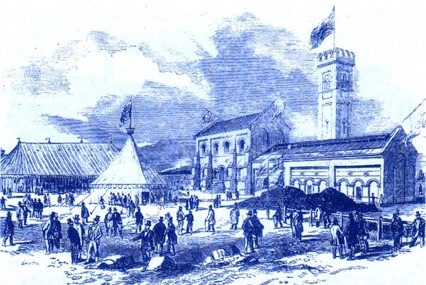London, the vibrant and bustling capital of the United Kingdom, is renowned for its rich history, iconic landmarks, and diverse culture. However, behind its façade of grandeur lies a forgotten water crisis that has plagued the city for centuries. In this article, we delve deep into the depths of London’s water scarcity, unearthing the challenges faced by its inhabitants throughout history and shedding light on the innovative solutions that have been implemented to address this pressing issue. Join us as we embark on a journey to understand the great thirst that has shaped London’s past and present.
A Historical Drought
London’s water crisis can be traced back to the early 17th century when the city experienced a rapid population growth. As the demand for water surged, the existing water sources proved inadequate to meet the needs of the expanding population. The River Thames, once a reliable source of freshwater, became heavily polluted, rendering it undrinkable. Wells and springs within the city were also insufficient to quench the growing thirst of Londoners.
The Victorian Waterworks
In the mid-19th century, amidst the grip of a severe cholera epidemic, the London Metropolitan Board of Works took action to address the water crisis. The construction of an extensive network of underground waterworks, including reservoirs, pumping stations, and aqueducts, was initiated. These Victorian-era engineering marvels not only aimed to supply clean and safe drinking water to the city but also to improve sanitation and combat the spread of waterborne diseases.
The Birth of the Thames Water Authority
With the passage of time, the responsibility of managing London’s water supply shifted to the Thames Water Authority. This governmental body took on the task of maintaining and safeguarding the city’s water resources. However, despite their efforts, the increasing demand for water coupled with ageing infrastructure posed significant challenges. As the population continued to grow, so did the strain on London’s water system.
Modern Challenges and Solutions
Fast forward to the present day, and London finds itself facing a new set of challenges in ensuring an adequate water supply for its inhabitants. Climate change, population growth, and increased water consumption patterns have intensified the strain on the city’s water resources. To combat this, innovative solutions have been implemented, ranging from water recycling and rainwater harvesting initiatives to the use of smart technologies for water management.
Water Recycling: A Sustainable Approach
Water recycling has emerged as a sustainable solution to alleviate London’s water scarcity. By treating wastewater and making it safe for various non-potable uses such as irrigation and industrial processes, this approach helps reduce the strain on freshwater sources. The implementation of advanced treatment technologies and the establishment of dedicated water recycling facilities have paved the way for a more sustainable water future in London.
Rainwater Harvesting: Harnessing Nature’s Bounty
Embracing the concept of harnessing nature’s bounty, London has increasingly turned to rainwater harvesting as a means to augment its water supply. This practice involves collecting rainwater from rooftops and storing it for later use. Not only does rainwater harvesting provide an additional source of water, but it also helps reduce the burden on the city’s drainage system during heavy rainfall events.
Smart Water Management: Leveraging Technology
The advent of smart technologies has revolutionized water management in London. Through the use of sensors, data analytics, and real-time monitoring systems, authorities can gain valuable insights into water usage patterns, identify leaks, and optimize the distribution of water resources. This data-driven approach enables more efficient and sustainable water management practices, ensuring a more resilient water supply for the city.
Conclusion
London’s forgotten water crisis has shaped the city’s landscape and influenced its development throughout history. From the Victorian waterworks to modern-day innovations, the struggle to meet the ever-growing demand for water has driven the implementation of sustainable and forward-thinking solutions. As London continues to evolve, it is imperative that we acknowledge and address the challenges of water scarcity head-on. By embracing technological advancements, promoting water conservation, and fostering a collective responsibility towards our precious water resources, we can ensure a thriving and resilient future for the great city of London.
